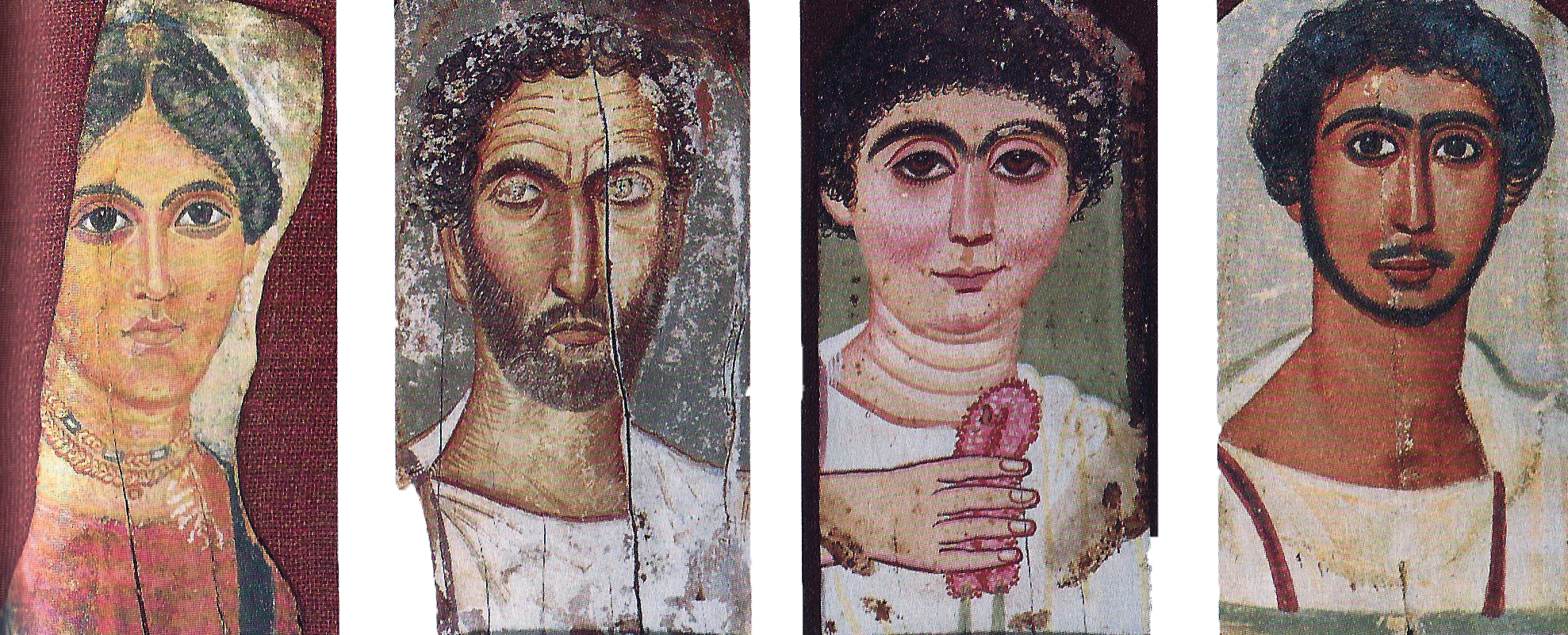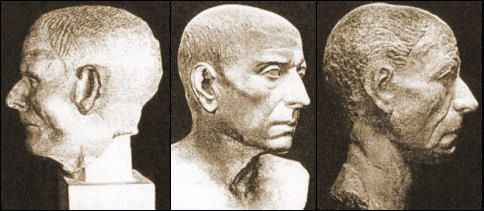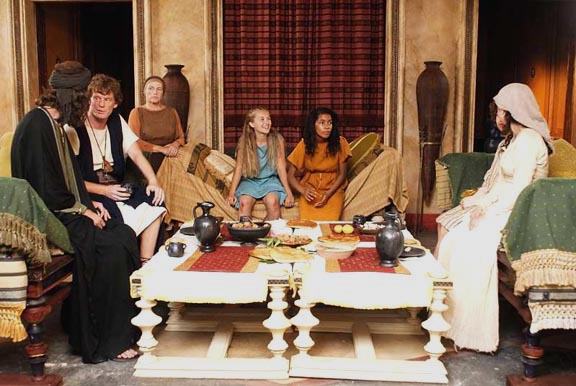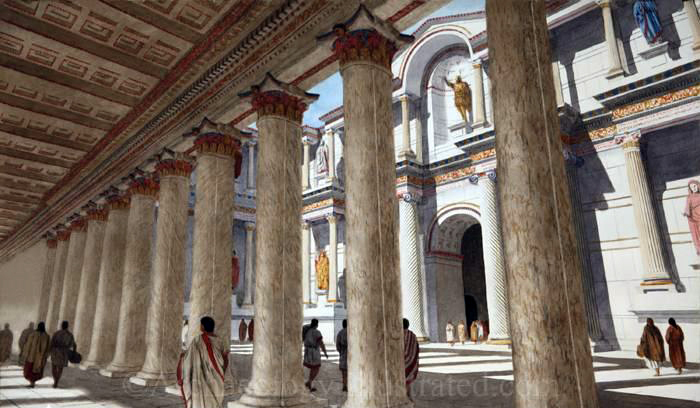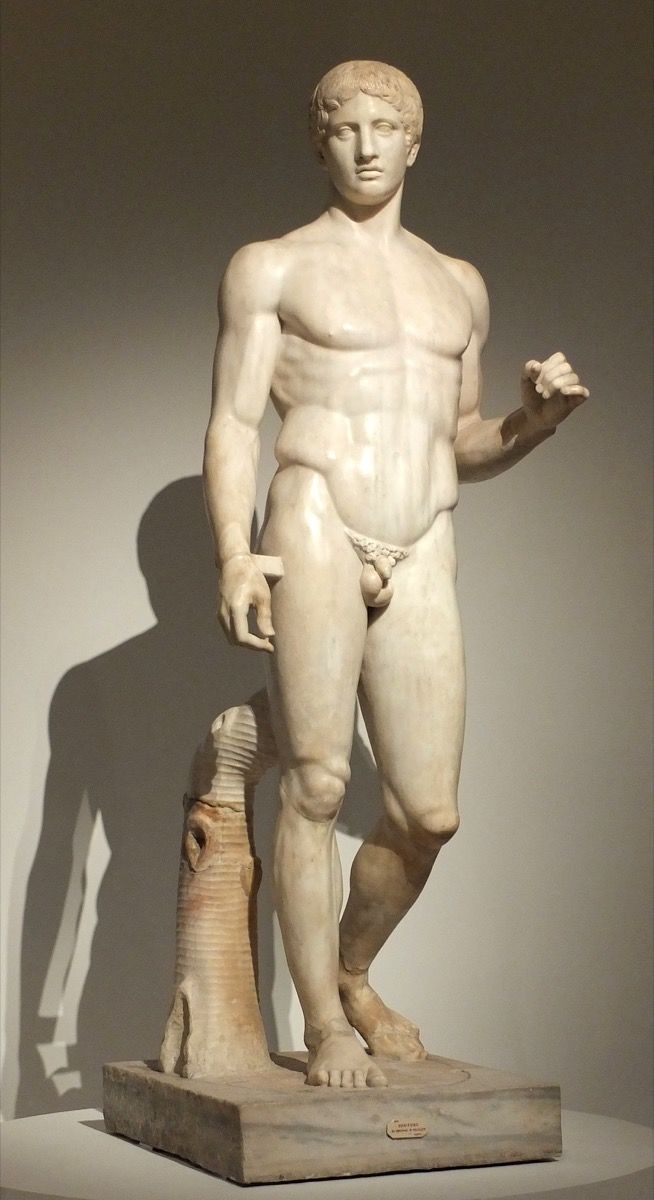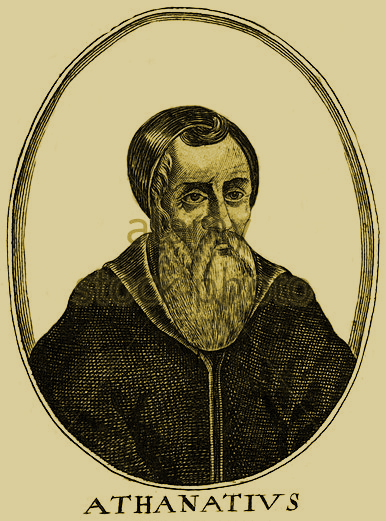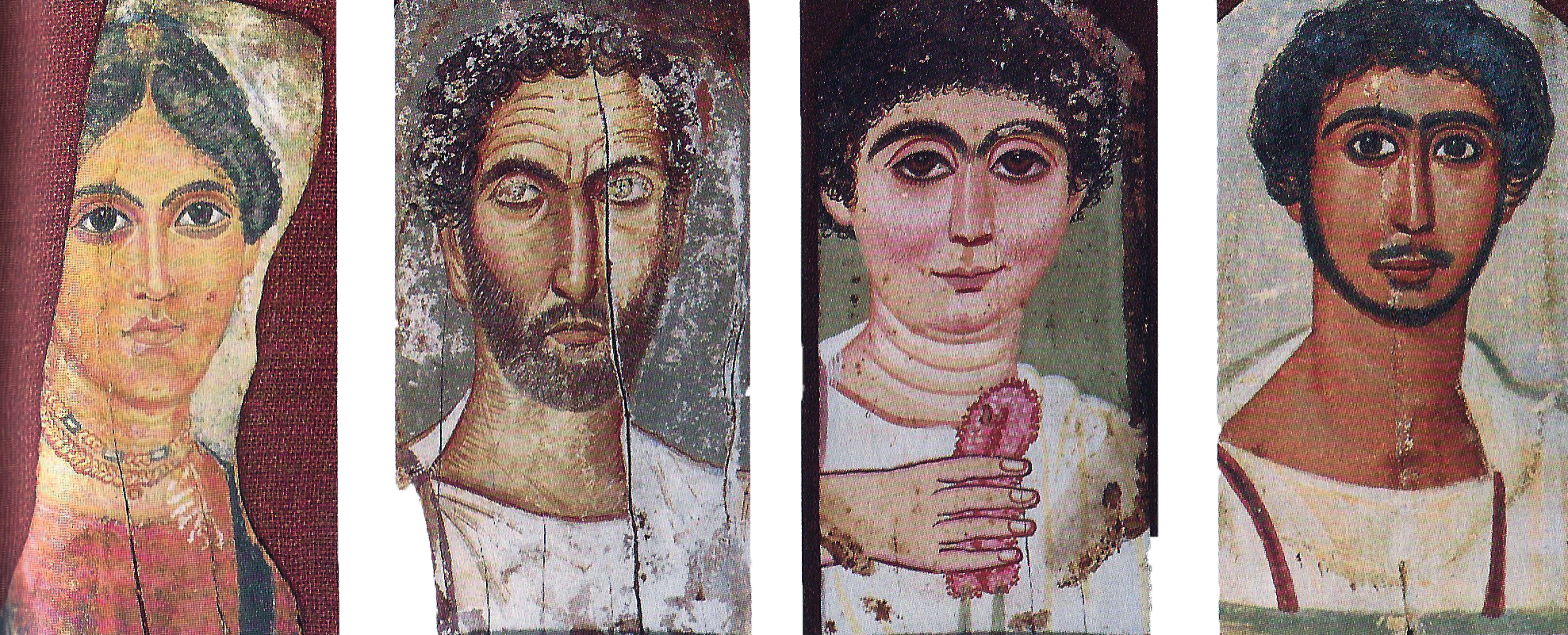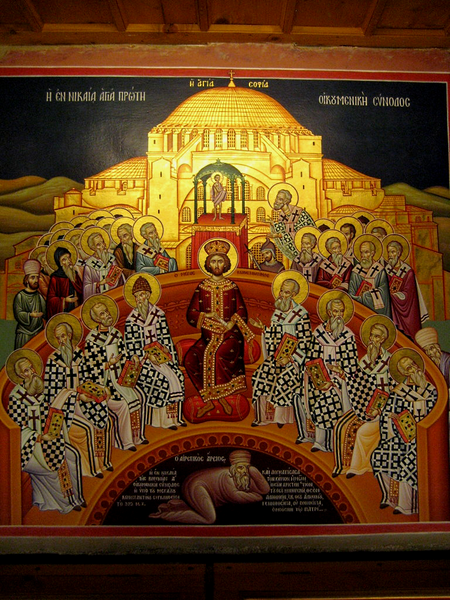Below, abridged translation from the first
volume of Karlheinz Deschner’s Kriminalgeschichte
des Christentums (Criminal History of Christianity)
It was not fought for faith, but for power and for Alexandria
The exacerbated interest in faith was not really more than the obverse of the question. From the beginning, this secular dispute was less about dogmatic differences than about the core of a typical clerical policy. ‘The pretext was the salvation of souls’—admitted even Gregory of Nazianzus, son of a bishop and holy bishop in turn, who avoided meddling in worldly matters and who often eluded his ecclesiastical offices by fleeing—, ‘and the motive was anxiety of domain, not to mention tributes and taxes’.
The hierarchical ambitions for power and the disputes over the Episcopal sees, in whose course the theological rivalries were often forgotten, gave duration and vehemence to those enmities. It not only excited the Church but, at least in the East, also the state. Not only did the council fathers sometimes engage in quarrels until the Holy Spirit spoke, but also lay people beat themselves bloody in public.
Any dispute produced there between the clergy, Arian and Monophysite, iconoclasm exceeds the limits of a mere quarrel between friars and shocks all political and social life for centuries. This makes Helvetius affirm, in a lapidary way: ‘What is the consequence of religious intolerance? The ruin of the nations’.
And Voltaire assures that ‘If you count the murders perpetrated by fanaticism from the brawls between Athanasius and Arius up to the present day, you will see that these disputes have contributed to the depopulation of the Earth rather than the warlike confrontations’, which undoubtedly it has been very often a consequence of the complicity between the throne and the altar.
However, just as the policies of the State and the Church were intimately intertwined, so were the latter and theology. Of course, there was no official doctrine about the Trinity, but only different traditions. Binding decisions ‘were only made in the course of the conflict’ (Brox).
In spite of this, each of the parties, especially Saint Athanasius, liked to call his desire for prestige and power a matter of faith; thus could accusations be constantly presented and justified. Athanasius immediately theologises any political impetus and treats his rivals as heretics. Politics becomes theology and theology, politics. ‘His terminology is never clear enough, the question is always the same’ (Loofs). ‘With Athanasius it is never about formulas’ (Gentz).
What most characterizes the ‘father of orthodoxy’ is that he leaves his extremely confused dogmatic position, using it until the 350s, to designate the ‘true faith’, those topics that would later be used to stigmatize the Arian or semi-Arian ‘heresy’: that he, the defender of Nicaea and the homousios, rejected for a long time the theory of hypostasis, thereby delaying the union; and that he, the bulwark of orthodoxy, even cleared the way for an ‘heretical doctrine’, Monophysitism.
For that reason, the Catholics of the 5th and 6th centuries had to ‘touch up’ the dogmatic treatises of their doctor of the Church. However, for a long time the Arians proposed a formula of profession that coincided literally with that often used by Athanasius, but then appeared as ‘Arian heresy’ since whatever the opponent said, it was always bad in advance, malignant and diabolical; and any personal enemy was an ‘Arian’.
All this state of affairs was facilitated by the fact that for a time there had been total confusion in theological concepts, and the Arians had split again. Even Constantine II, who had gradually favoured them more and more radically— ‘to all the corrupt bishops of the Empire’ (Stratmann, catholic), ‘to the caricatures of the Christian bishop’ (Ehrhard, catholic)—, got so fed up of the dispute over the ‘nature’ of Christ that ended up forbidding it.
The theologians of the post-Constantinian era compared this war of religion, increasingly unintelligible, with a naval battle in the midst of the fog, a nocturnal combat in which it is impossible to distinguish the friend from the foe, but in which one hits with viciousness, often changing sides, preferably, of course, towards the side of the strongest in which all means are allowed; one hates intensely, intrigues are plotted and jealousies provoked.
Even Jerome, the father of the Church, affirmed in his moment that he did not manage to find peace and tranquillity neither in a small corner of the desert, because every day the monks asked him accounts of his faith. ‘I declare what they want, but it is not enough for them. I subscribe to what they propose to me and they do not believe it. It is easier to live among wild beasts than among such Christians!’
Numerous aspects of the chronology of the dispute are still controversial, even doubting the authenticity of many documents. However, the direct starting point was the revolt provoked by a debate about the Trinity around the year 318 in Alexandria, a city in which they fought for more than faith.
Alexandria, founded in 332-331 by Alexander the Great, the city of the poet Callimachus, the geographer Eratosthenes, the grammarian Aristophanes of Byzantium and Aristarchus of Samothrace. The city of Plotinus and later of Hypatia, was the main metropolis of the East, a cosmopolitan city of almost a million inhabitants, whose luxury only rivalled that of Rome.
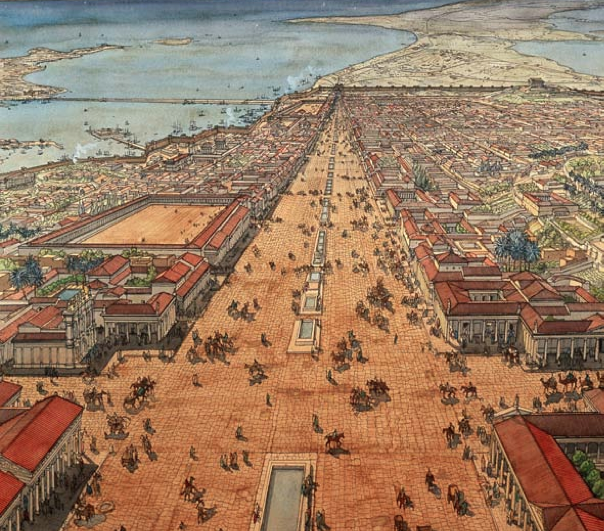
Alexandria was mapped out with broad views, it was rich and an important commercial plaza, with a fishing fleet that obtained not insignificant catches and stood out for its monopoly in the papyrus industry, which supplied to the whole world.
Alexandria, the place where the Old Testament was translated into Greek (the Septuagint), was also the seat of a patriarchy—it is not true that St. Mark founded it; the first bishop of whom there is historical record is Demetrius I—, and it was, within the whole of the Church including that of the West, the largest and most powerful of all Episcopal sees. The two Egypts, Thebes, Pentapolis and Libya were under its jurisdiction.
This position had to be maintained, consolidated and expanded. The Alexandrian hierarchs, called ‘popes’ and who soon became immensely wealthy, intended during the 4th and 5th centuries to get at all costs the domination of the totality of the Eastern dioceses. Their theology was also opposed to that of Antioch, which also joined the struggle for rank between the two patriarchs, always winning he who supported the emperor and the ecclesiastical and imperial seat of Constantinople.
In constant struggle against ecclesiastical competitors and the State, a political apparatus of the Church arose here for the first time, similar to what would later be in Rome. According to this, the bishops of the secondary seats acted, who paid for any change of course with the loss of their Episcopal armchairs, or either they won them. Not one of the innumerable paleo-Christian churches of Alexandria was preserved.
Around the year 318, Patriarch Alexander would have preferred to silence the burning question about the ousia, the nature of the ‘Son’. There was a time when he was personally linked to the orator Arius (around 260-336), denounced by the Meletians and since 313 he was the presbyter of the church of Baucalis, the most prestigious in the city and the centre of a large group of followers formed by young women and workers of the dams.
But Arius, who was a kind and conciliatory scholar and probably composed the first popular songs of the Christian era (now totally forgotten), had renounced the Episcopal seat in favour of Alexander, and in the contest he participated less in a personal capacity than as an exponent from the school of theologians of Antioch, which he had neither founded nor directed. On the other hand, Bishop Alexander had previously defended, which was also reproached by Arians, ideas and doctrines similar to those he was now pursuing; he affirmed that Arius spent ‘day and night in insults against Christ and against us’.
After two public debates, at a synod that brought together 100 bishops, St. Alexander excommunicated and exiled Arius and all his followers—a decision that undoubtedly contributed to the struggle of the high office against the privileges of his priests—, and warned everywhere against the intrigues of the ‘heresiarch’. He also informed the Roman bishop Silvestre (314-335). And by means of two encyclicals, in 319 and probably in 324, he appealed to ‘all other beloved and venerable servants of God’, ‘to all the bishops beloved by God of all places’.
This resulted in measures and countermeasures being taken. Some princes of the Church anathematized Arius while others expressed their appreciation. Among the latter was the important intercessor before the court, the influential Bishop Eusebius, supreme pastor of Nicomedia, the city of residence of the emperor, who welcomed his banished friend; and Bishop Eusebius of Caesarea, already famous as biblical exegete and historian.
Two synods that resolved in favour of Arius made possible his rehabilitation and return. The Arian party of Alexandria was acquiring more and more force, coming to name a counter-bishop. Alexander defended himself in vain, lamented the ‘den of thieves’ of the Arians and came to fear for his own life. Riots followed, which spread throughout Egypt, and finally the Eastern Church split.
New Episcopal conferences, such as the Synod of Antioch in 324, again condemned Arius, writing to the ‘bishops of Italy, who depend on the great Rome’, although without considering the Roman power as sovereign or that it had come to play some role of relevance. And in the year 325 a council was held in the Emperor’s summer residence.
